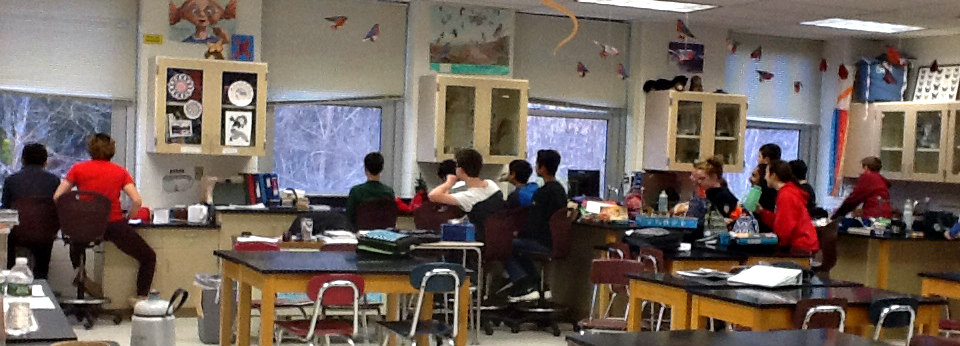February 2, 2018

This season’s BirdSpotter contest celebrated teachers and students who love birds. Over the course of the contest, we selected three teachers who use FeederWatch as a way to engage students with hands-on science. Winners received goodies from the Cornell Lab and a gift card from our sponsor Wild Birds Unlimited.
Congratulations to Jennifer Ford and her eighth-grade science students at Farnsworth Middle School in Guilderland, New York! Jennifer’s interest in birding started at a young age; her parents were lifelong birders. At the suggestion of a friend, she discovered FeederWatch and began counting at her home feeders. Jennifer quickly realized that adding FeederWatch to her science classes would be a great opportunity for her students to participate in a science project that extends beyond their local community. She wrote, “My students and I are in our fourth year of bird counting and absolutely love it!”
Jennifer works to incorporate more than just bird counts into her classroom. Her students are completing a yearlong research project. Many of the students are asking questions related to birds and bird feeding. They are using FeederWatch data to answer such questions as: What types of bird seed to birds prefer? What types of bird feeders do birds prefer? Do different types of bird seed attract different birds? Does the placement of a bird feeder affect how many birds visit it? Does weather affect the birds that visit a bird feeder?
“I also integrate the feeders into many of my lessons as ‘teachable moments,’” she wrote. “For example, when we talk about invasive species, we do research on the House Sparrows at our feeders. A hawk visiting the feeders leads to a discussion on food webs. When we talk about adaptations, I point out the birds visiting the feeders and ask students to brainstorm how these birds survive our cold winters.”
In addition to her own projects, Jennifer noted, “The math teacher that I collaborate with does a statistics project with our students. This year, we are teaming up to have students look at our current and past FeederWatch data.”
Having the feeders where students can view them at all times is helpful and allows for her class to ask great questions. Also, near the bird-watching area (pictured above) Jennifer has a host of resources available for students including: age-appropriate field guides, binoculars, and bird flashcards.
The classroom windows face a wooded area and a pond. The feeders host a diversity of birds including: Black-capped Chickadees, White-breasted Nuthatches, Northern Cardinals, Blue Jays, Tufted Titmice, Mourning Doves, Dark-eyed Juncos, and a three different woodpecker species. Her students enjoy the jays and cardinals whose colors brighten the winter days. Jennifer added, “One year we had a Sharp-shinned Hawk hanging around near the feeders, and my students found that to be quite exciting!”
A sure sign that her students enjoy the birds, some join Jennifer at lunchtime to watch the feeders. “I have students who voluntarily spend lunch periods with me,” she shared, “because they would rather watch the birds while eating lunch than sitting in a cafeteria.”
Thanks to all the teachers who shared their FeederWatch in the Classroom experience! We are inspired by your enthusiasm and creativity.


